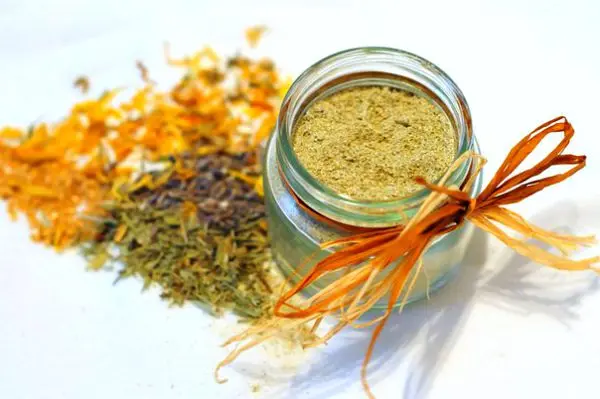Contents
😉 Hello everyone! Thank you for choosing the article “Ubtan: what it is and how to use it” on this site!
What is ubtan
This is the name of a natural remedy for everyday washing. This is a powder made from crushed medicinal plants, various flours, clay and spices.
In structure, ubtan is a cross between a scrub and a mask. Unlike the first, it is much more delicate, but more crumbly than a dry mask. Purpose – gentle cleansing, exfoliation, skin renewal along with its saturation with useful elements.
Many people mistakenly refer to this product as a novelty in the cosmetic industry. In fact, the remedy is at least 5 thousand years old! It is one of the first human-made cosmetic products.

To obtain ubtan, in ancient India, dried herbs, seeds, and fruit peels were crushed and used to cleanse the face and body. At first, this remedy was part of the preparation for religious ceremonies and holidays. Then, enriched with healing powders, it became an Ayurvedic medicine.
Turmeric, sandalwood bark, mustard seed, ground chickpeas, vegetable, often mustard oil were added to it. As a result, the product softens, moisturizes, relieves the skin from inflammation and rashes. Now this magic powder can be bought at a pharmacy or ordered online.
Ubtan composition
Today, when naturalness and environmental friendliness are in trend, ubtan returned and took its rightful place on the shelves of cosmetics stores. Its modern types may include:
- flour of chickpea, flax, amaranth, oats, barley, buckwheat, rye, corn, pumpkin seeds, rice, durum wheat;
- powder from mint, fennel, orange peel, lime blossom, elecampane, licorice, chamomile, hops, nettle, sage and so on;
- turmeric;
- ginger;
- Ayurvedic plants – arjuna, guava, shikakai, others;
- powdered milk or cream;
- clays – red, blue, gray, green, white;
- aloe vera extract;
- vitamins E and A;
- sea salt;
- base and essential oils.
Features:
- without disturbing the acid balance, improves microcirculation in the epidermis;
- improves skin tone;
- reduces the activity of the sebaceous glands;
- evens out the tone.
At the same time, ubtan is applicable for any type of skin.
For normal skin
To effectively act on normal skin, the composition should include: chamomile, rose petals, light types of clay, oat flour, lentils, peas, milk powder.
For greasy skin
in addition to flour, turmeric, ginger, you can add extracts of birch buds, mint, calendula, string, black, green clay, sea salt, esters of tea tree, lavender, geranium.
For dry skin
a composition based on flaxseed flour, almond flour, pink clay, calamus, cornflower, licorice, vegetable cream is suitable.
Ubtan: face recipe
The ubtan mixture is easy to make with your own hands. All you need is finely ground vegetable flour, at least 5 types of dried herbs, clay and oil. The proportions are as follows:
- 50% of various flours take 30% of plant powder;
- 10% clay and the same amount of additional components – oils, extracts, milk powder and the like, depending on the type of skin.
Ubtan for the face: how to use
The product is applied to a clean, slightly damp face by mixing the optimal amount of powder with a small amount of mineral water, green tea, yogurt or milk. The gruel is spread and, with a damp piece of cotton wool, the skin is massaged. The mixture is washed off with water at room temperature.
😉 If this information turned out to be useful to you, share it with your friends in social networks! Come in, run in, drop in!









